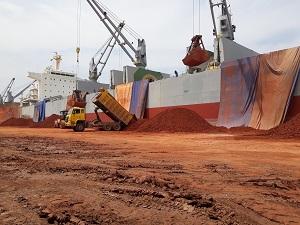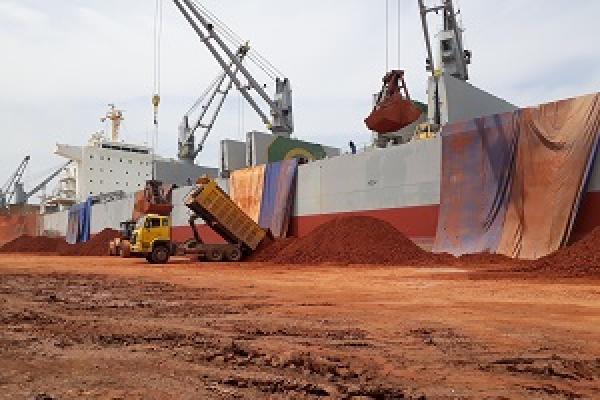
Mark Rudd
Published: February 24, 2021

IMO Resolution MSC.462(101) introduced amendments (05-19) to the International Maritime Solid Bulk Cargoes (IMSBC) Code. The amendments became mandatory on 1 January 2021.
The amendment 05-19 to the International Maritime Solid Bulk Cargoes (IMSBC) Code has introduced several changes. The changes with respect to bauxite are:
- Revised schedule for BAUXITE (Group C)
- New schedule for BAUXITE FINES (Group A)
- Revised Proctor/Fagerberg test procedure to determine the Transportable Moisture Limit (“TML”) for BAUXITE FINES (Group A)
For the Club’s members, the most important part is that there are new criteria to determine whether the cargo they are offered is Group C or Group A.
Under the new criteria, Group A bauxite cargoes are those cargoes containing more than 30% of fine particles less than 1 mm (D30 < 1 mm) and more than 40% of particles less than 2.5 mm (D40 < 2.5 mm).
All other Bauxite cargoes remain classified as Group C.
Notwithstanding the above provision, bauxite cargo meeting the above criteria may be carried as a group C cargo in accordance with the provisions of the individual schedule for BAUXITE where the shipper provides the master with a certificate, in accordance with the result of the test approved by the competent authority of the port of loading,* stating that the moisture of the cargo freely drains from the cargo so that the degree of saturation is not liable to reach 70%.
(* IMSBC code - Appendix 2 – Section 1.6 Modified Proctor/Fagerberg test procedure for bauxite)
The Club recommends the following:
- Members ask their shippers for confirmation of the following data:
- the percentage of particles smaller than 1mm and
- the percentage of particles smaller than 2.5mm.
- Once the cargo is presented for loading, the Master/Chief Officer should inspect it to assess whether the visual appearance appears consistent with the shippers’ information on particle size.
- It would be prudent for a surveyor to attend during loading, especially when operating in areas prone to high precipitation and where cargoes are stored in open areas and transported in uncovered barges.
- Attempts by Charterers to insert provisions restricting an Owners’ right to representation or testing should be strongly resisted.
- Where the Member has any concerns in regard to the cargo operations, consult with the Club and consider appointing an appropriately experienced surveyor.


